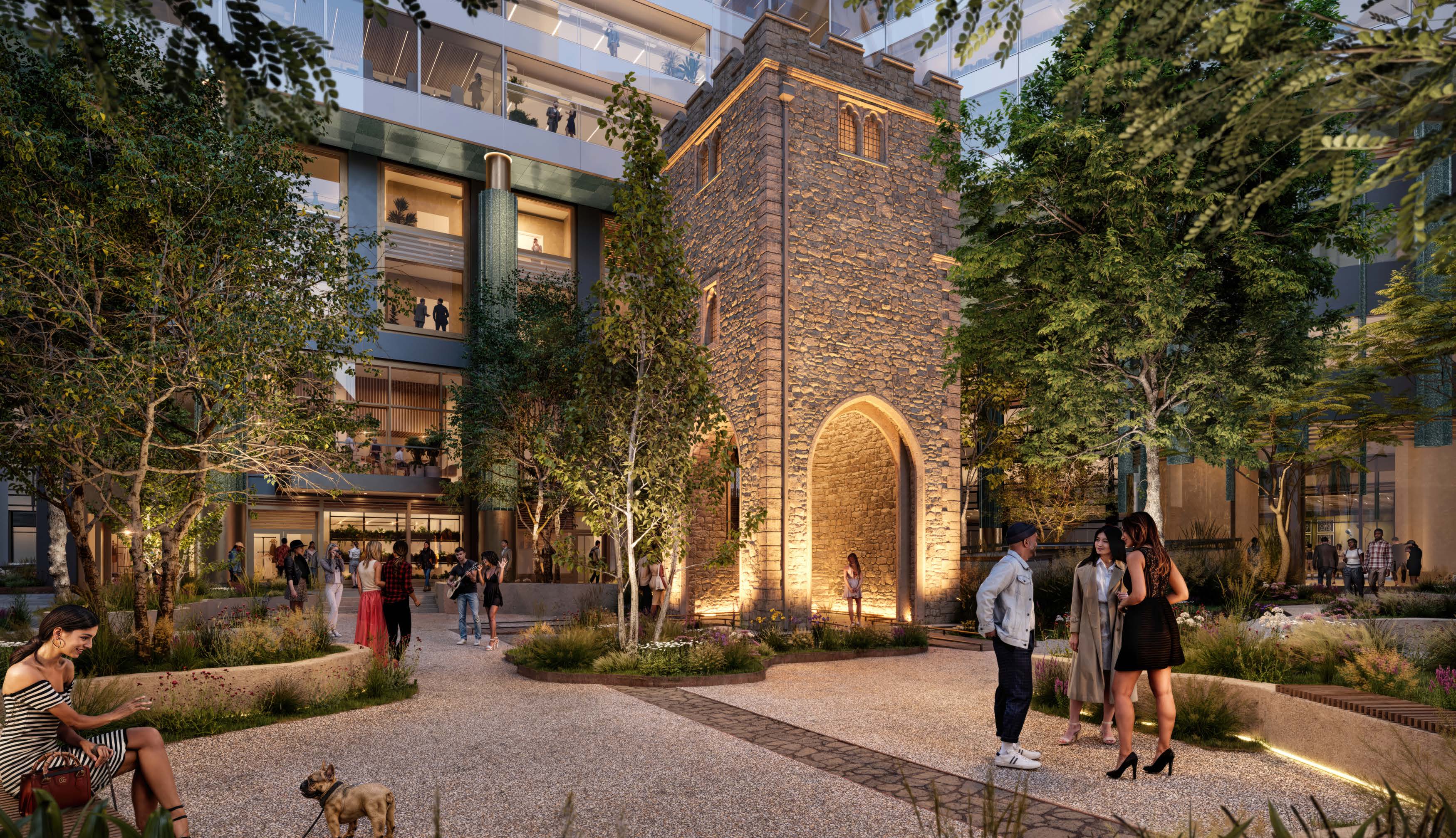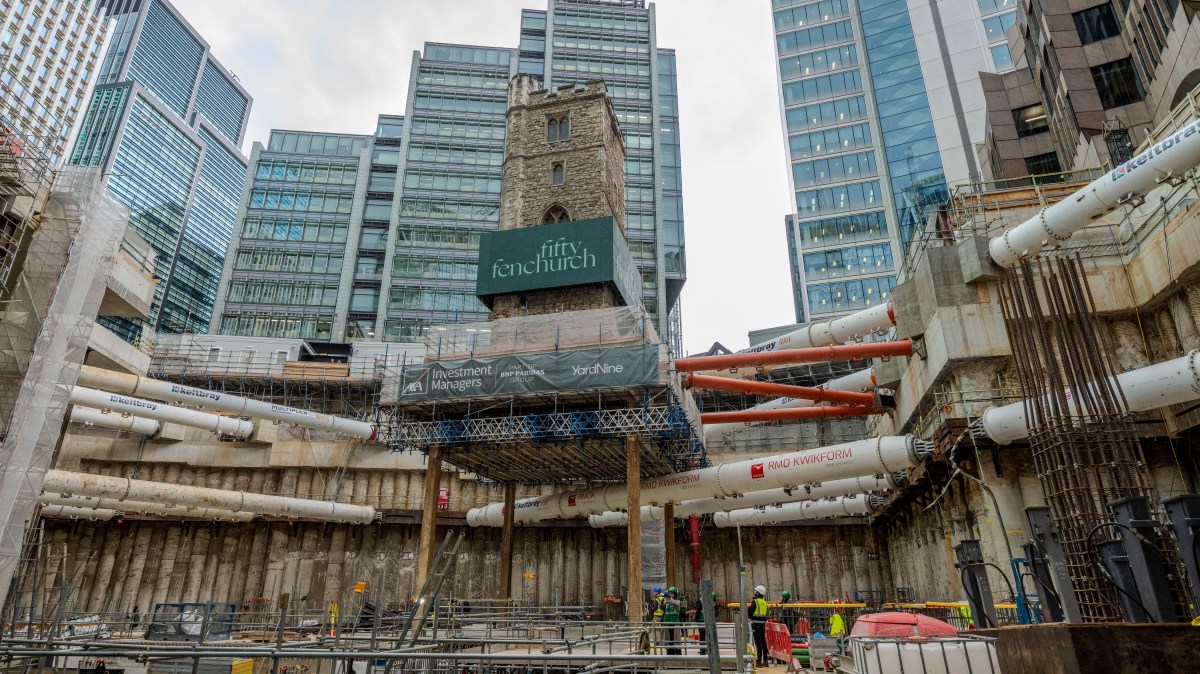A 700-year-old church tower is being suspended on 45ft stilts while developers clear the ground beneath to make way for the City of London’s newest skyscraper.
The tower, which is all that remains of All Hallows Staining close to Fenchurch Street station, is being preserved and will be the centrepiece of the public square at the base of 50 Fenchurch Street — the £1 billion office tower being built by the investment arm of Axa, the French insurer.
More than 125,000 tonnes of earth has been cleared from underneath and around the church — which survived the Great Fire of London in 1666 — into which the foundations will be laid and a basement level built.

The tower will form the centrepiece of a new public space, below
LUCY YOUNG FOR THE TIMES

The tower will sit on the stilts, which are the same height as three stacked London buses, until the basement is complete. Axa IM Alts, the developer, has described the excavation works around a grade 1-listed church as a “never-seen-before feat of engineering”.
• Is commercial property primed for mass consolidation?
As part of the redevelopment, the Lambe’s Chapel crypt is also being reinstated beneath the new building. Members of the public can take a lift down to explore the crypt — or take the lift up to a public roof garden.
Axa IM Alts bought a 250-year lease for 50 Fenchurch Street in 2022 from The Clothworkers’ Company, one of the Great Twelve Livery Companies of the City of London. As part of the deal, the Clothworkers’ Company will get a new subterranean livery hall underneath the main building.

The church as it appeared in 1736
ALAMY
Construction of the 36-storey block began this summer and is scheduled to conclude towards the end of 2028. Experts expect the development to cost upwards of £1 billion.
When complete, 50 Fenchurch Street, with grass and plants running down its side, will offer 650,000 sq ft of office space — about 150,000 sq ft more than in the Gherkin — as well as some retail and dining units on the ground floor.
Axa IM Alts is targeting the top sustainability rating for the 150-metre building, which will allow it to cash in on the “flight to quality” since the pandemic. Companies are increasingly wanting to base themselves in the newest, greenest buildings to help hit their own sustainability goals but also to appeal to their staff.
Because many office projects were mothballed during lockdown, there is an acute shortage of so-called “prime” workspace in London, which has pushed rents for best-in-class buildings to record highs. Five years ago, very few offices in the City were commanding rents in excess of £100 per sq ft per year: now, the top buildings are fetching close to £150 per sq ft.

